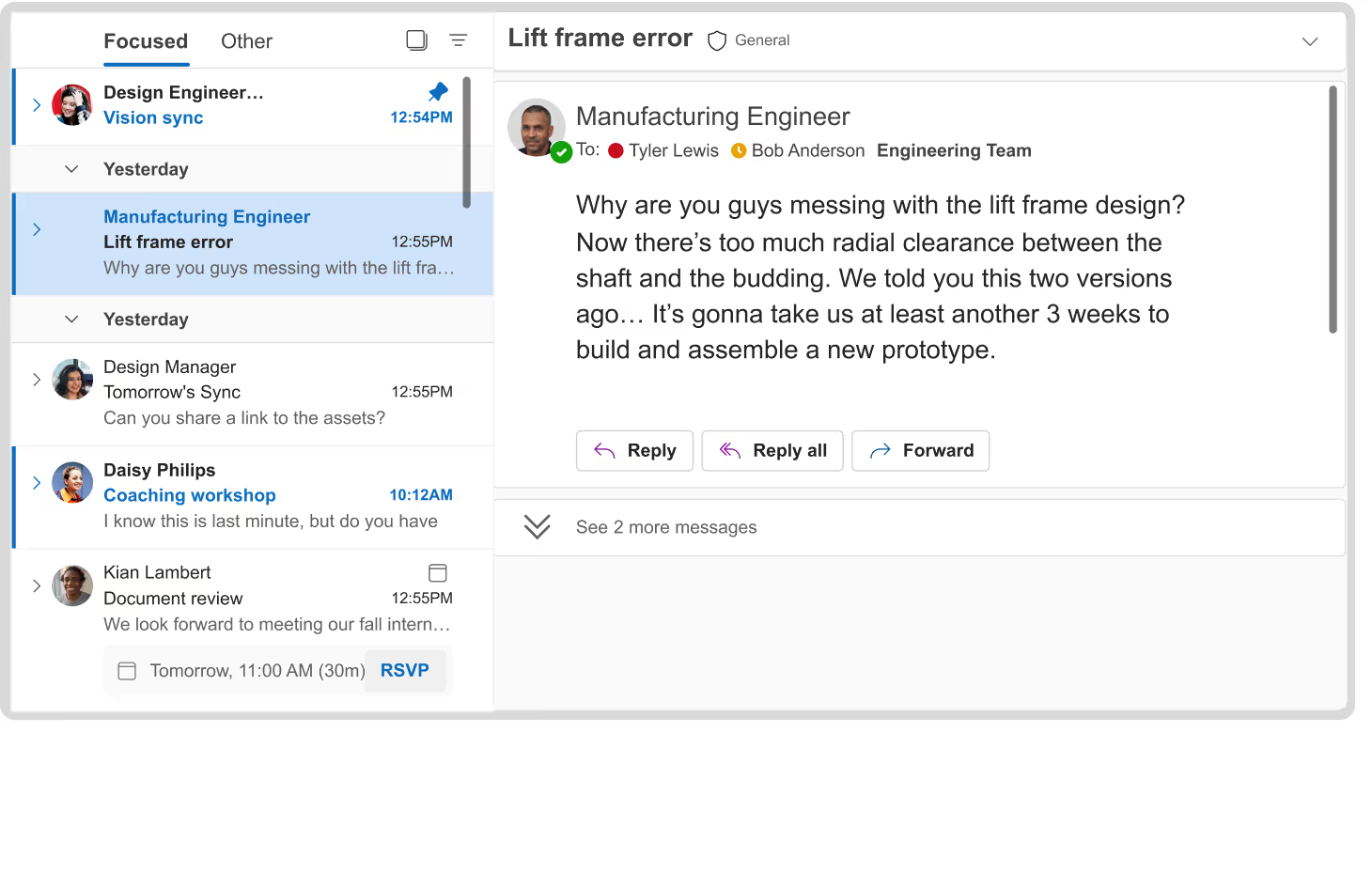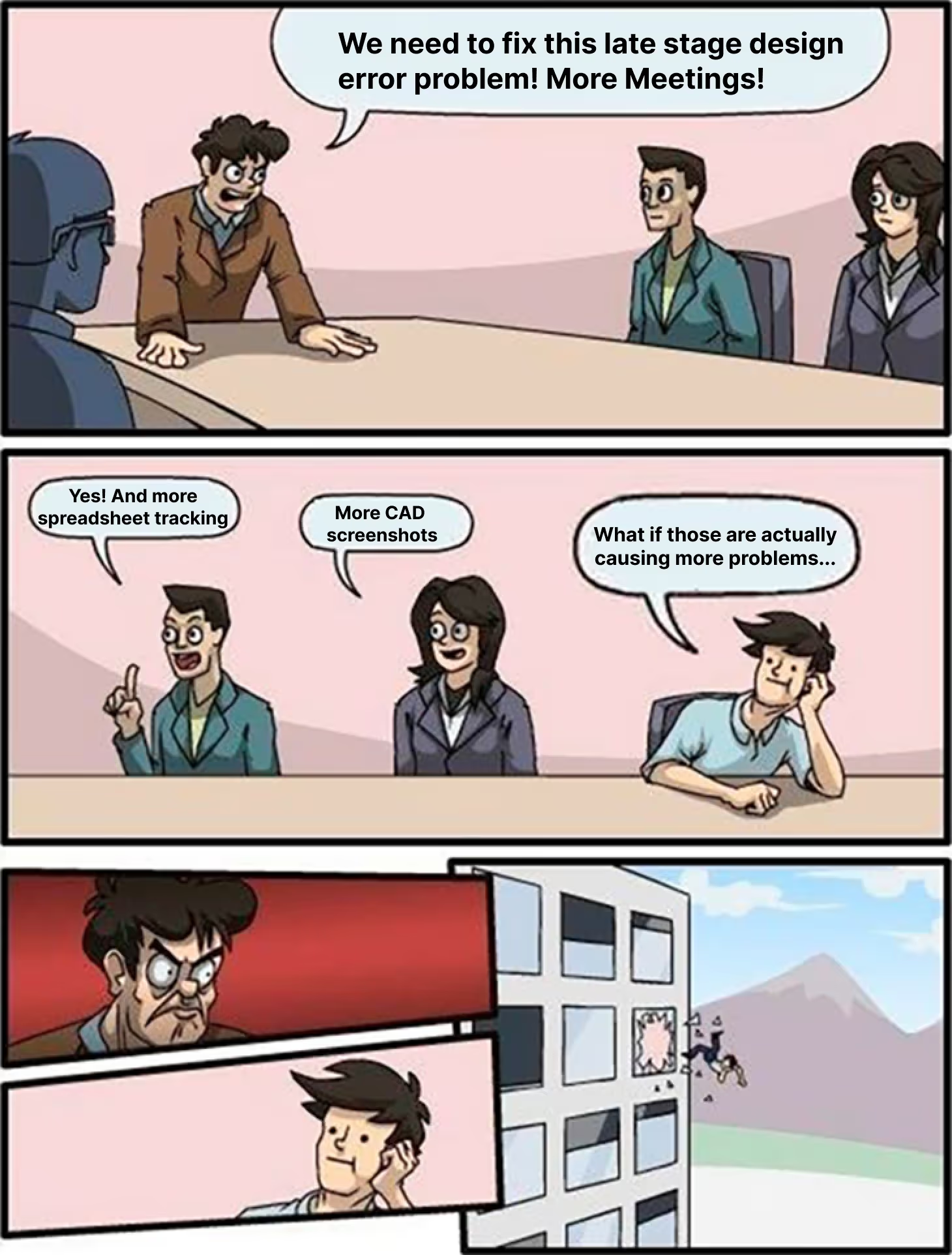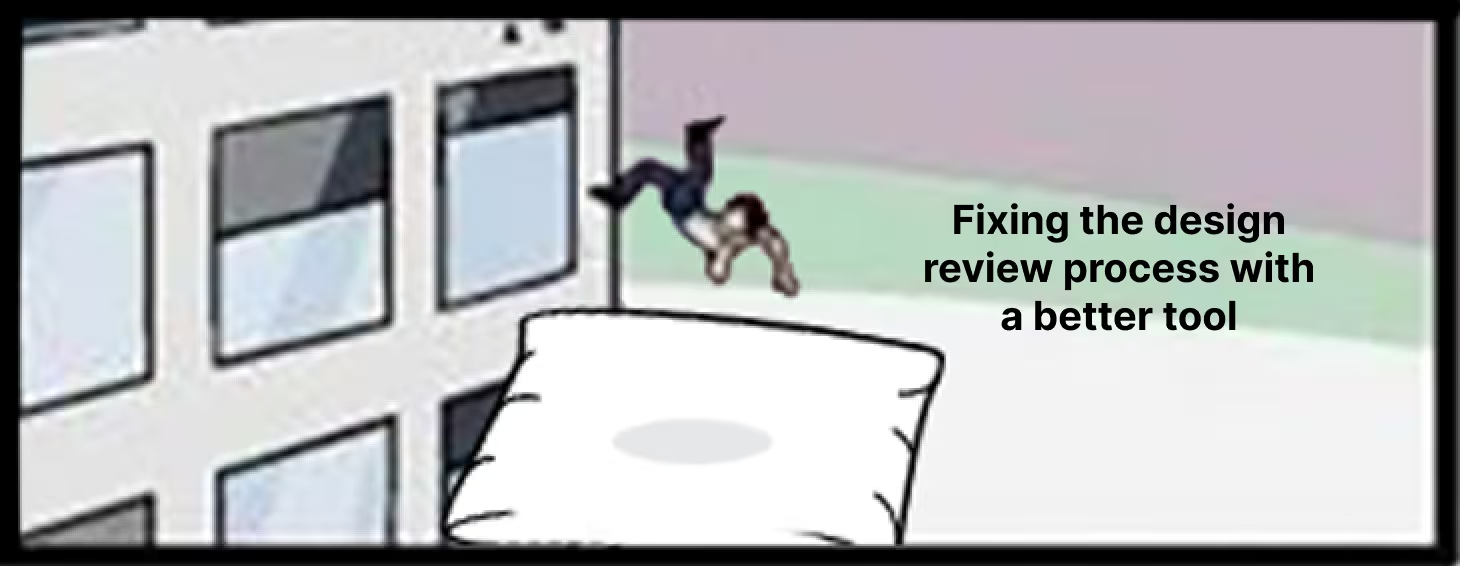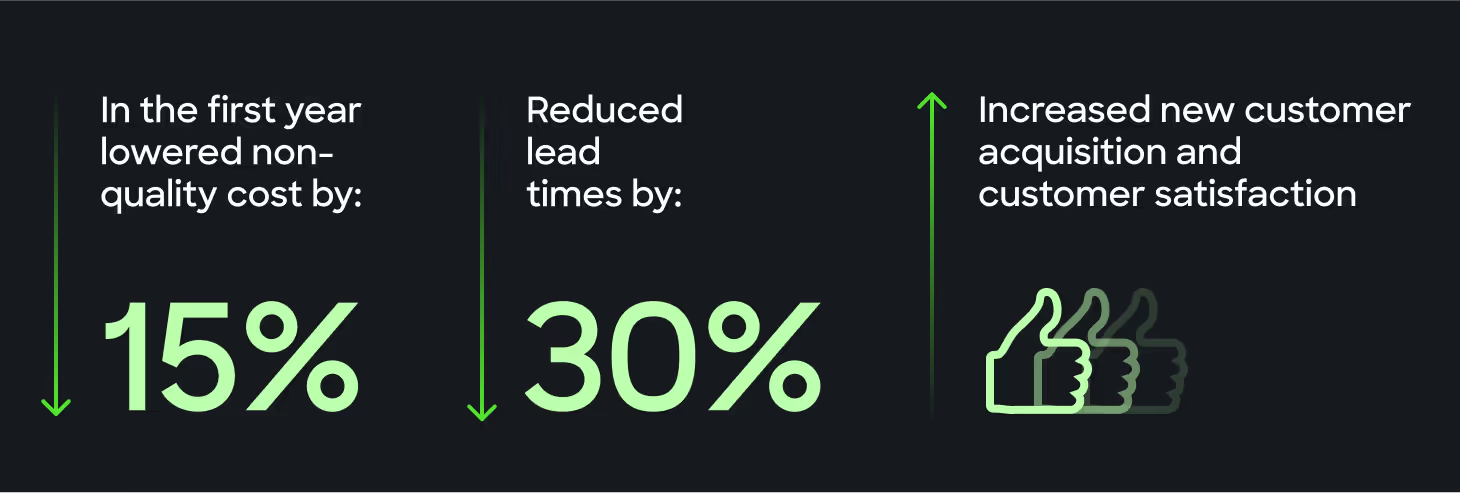Design quality dictates product quality
You’re surfacing too many design errors in production because you get critical feedback too late. And your solution is more meetings, more oversight, more PowerPoint reviews. But now your engineers actually do more work, with more steps and you're getting the same results. Something's wrong here.
GET A DEMO
We keep repeating the sins from our past
Sam Smythe is a mechanical engineering manager at a large fitness product company. He’s leading the launch of a massive treadmill upgrade. As his team nears the final steps before launch, he gets a stress-inducing Teams chat:“ABC Supplier said we got the RFQ in too late and now the parts are 33% more and it’s a 15% upcharge for a rush order.”
“I knew we should have gotten ABC in earlier!” Sam thinks, “And didn’t this same thing happen last NPD cycle?”
With 4 weeks to go before launch, Sam is already over budget. And the bad news doesn’t end there.

43% of design feedback is never tracked or addressed
It’s not Sam’s fault the same errors keep slipping through the cracks. It’s not Sam’s team’s fault either.
It’s the fault of upstream engineering processes – specifically, the design review process.

In a recent NPD survey, engineering leaders expose some troubling trends:
- 43% of all design feedback is lost and never documented.
- Engineering leaders believe 60% of all late stage design errors could be prevented with better design review.
- 59% of engineering leaders believe a better tool for design review is the best strategy.
Engineering leaders reveal some important trends here. Better design review would solve the problem causing most product launch delays: late stage errors. And better design review needs to be done with a better tool than what’s used today.
Yet, the most common reaction to frequent errors and lost feedback is more process. More meetings, more spreadsheet oversight, more PowerPoint CAD screenshots.

Despite inserting more process (and more work) into design reviews, the same problems keep occurring. And it’s not because processes don’t work. It’s because teams use the same tools to run the same upstream engineering processes they ran 5, 10, 20 years ago.
It’s because, despite knowing a better tool would solve these challenges, engineers don’t know a tool or process that will reliably solve for late stage design errors.
Let’s change that.
Better processes start with better tools
During product development, engineers have CAD for product design and PLM for product data and record-keeping.
But, when it comes to interacting with people during product development– nothing. Or rather, no dedicated system. So teams lean on meetings, emails, spreadsheets and PowerPoint to conduct and track design reviews.
Instead what teams need is a purpose-built tool for bringing people and data together during design review.
That tool is a Design Engagement System, or DES.
A DES does two essential things that engineering leaders need to help their teams launch products faster:
- A DES gives engineering teams a single place to facilitate and track design reviews and design decision-making.
- A DES addresses the gaps in current design review process as a byproduct of using the tool.
.png)
The best engineering teams launch products faster with a DES
Let’s do a quick recap. Companies need engineering teams to launch products faster. Despite knowing better tools and processes would fix product launch delays, engineering leaders fall back on throwing talent resources at the problem. Why? Because they believe there isn’t a tool that can solve this problem in a reasonable timeframe.The trouble with this kind of thinking is two-fold:
- It’s self-fulfilling. This kind of circular thinking is what keeps teams from questioning the way they’ve always done it. “Sure a better process or a better tool would work. But that’s risky. And it would take too long to implement.” When you keep thinking this way, it becomes truth.
- It forces engineering leaders to solve big problems with stopgap solutions. Hiring more engineers might solve the problem today or even for the next 12 months, but won’t solve the root cause issue.
The best engineering teams refuse to accept this.
Companies like Ford, Komatsu, Schaeffler and Schneider Electric use a DES as their better tool for design reviews. And therefore, use a DES as their better tool for uncovering more errors earlier in product development.
And the results speak for themselves. These same companies:


The best engineering teams choose CoLab as their DES to solve their product development challenges. See how CoLab might solve thse same challenges for you.
Or, you could just hire some more engineers and hope for the best.
The best engineering teams choose the right tools first
Every engineering team is different. Your team’s product development challenges might look different than another engineering team. But, the common thread is this: the best engineering teams want to solve the root cause process problem forcing them to delay product launches.
So, let’s talk about it.
With a product launch consultation, you’ll talk with a CoLab product expert about:
- Your team’s product development challenges
- Where the gaps in your process live
- Whether a DES can address those gaps
- How your team can start launching products faster


